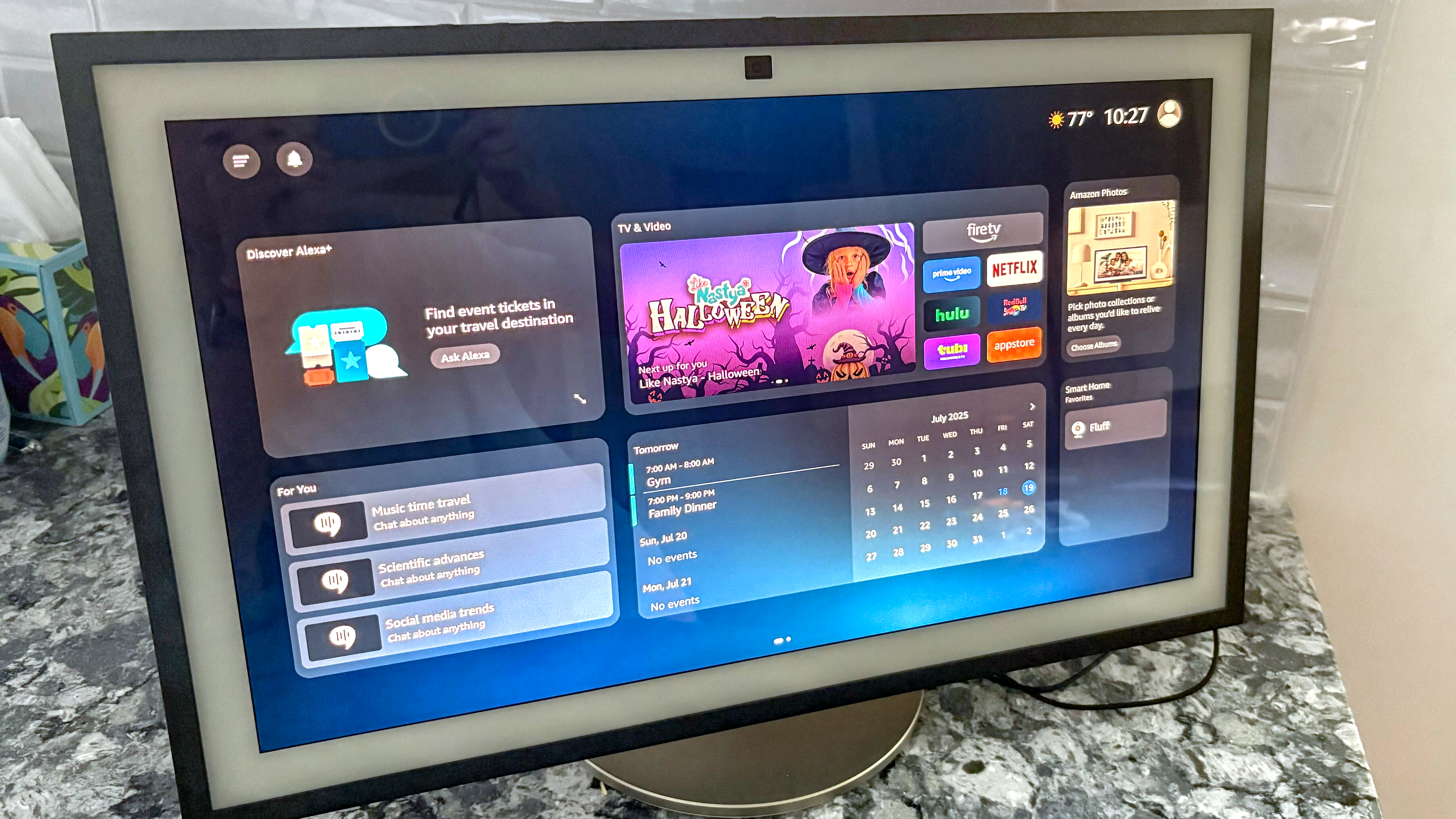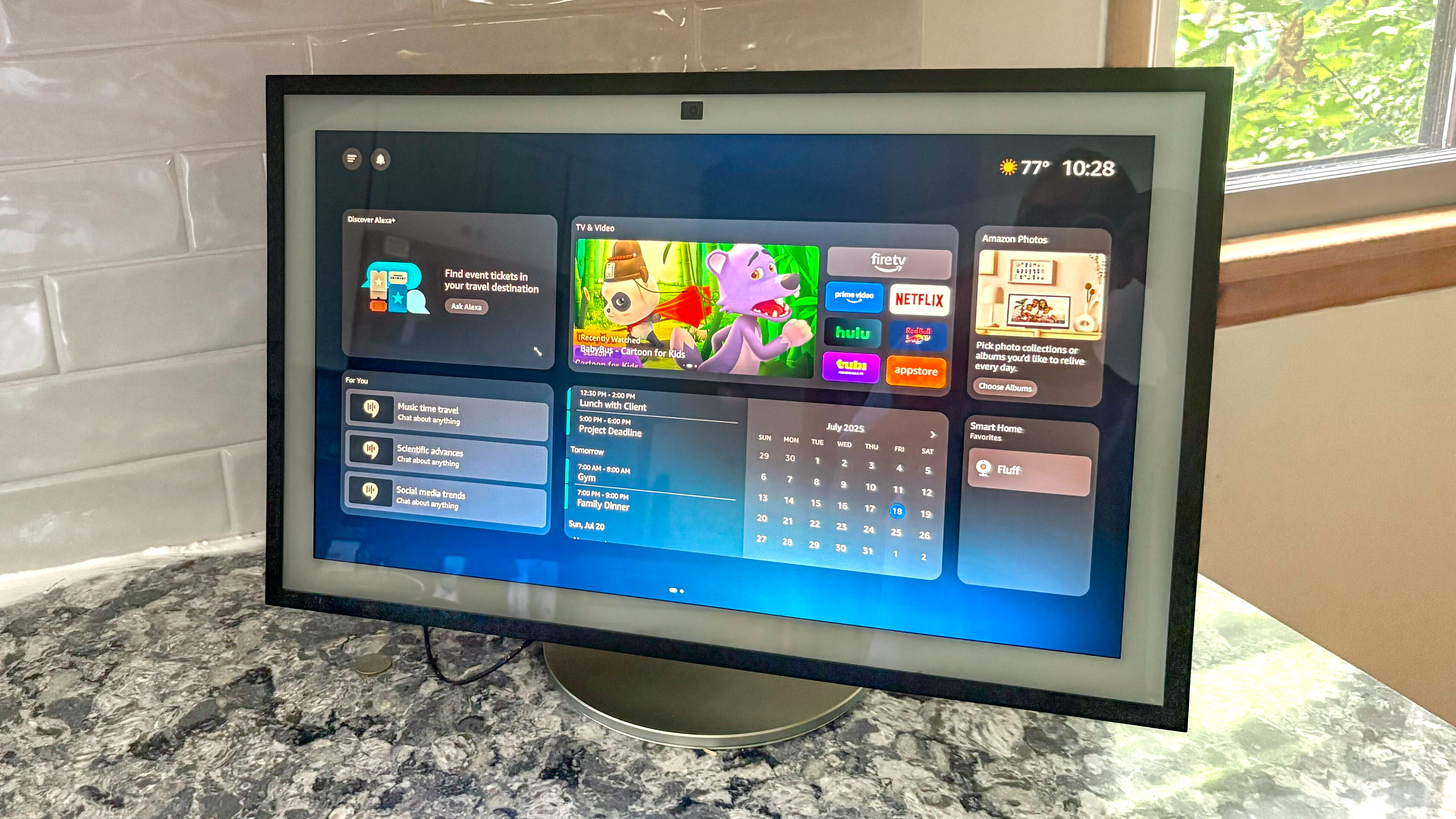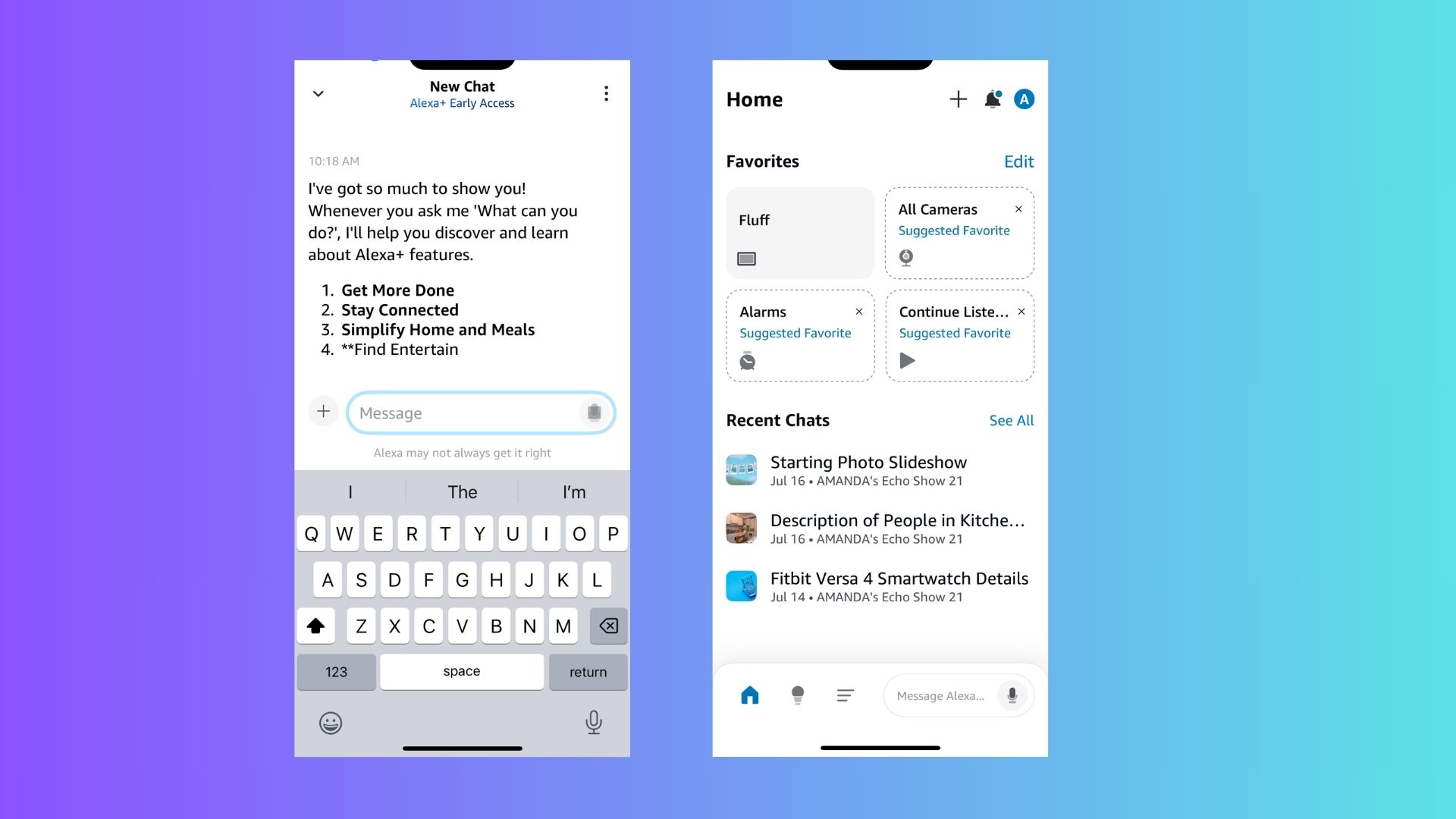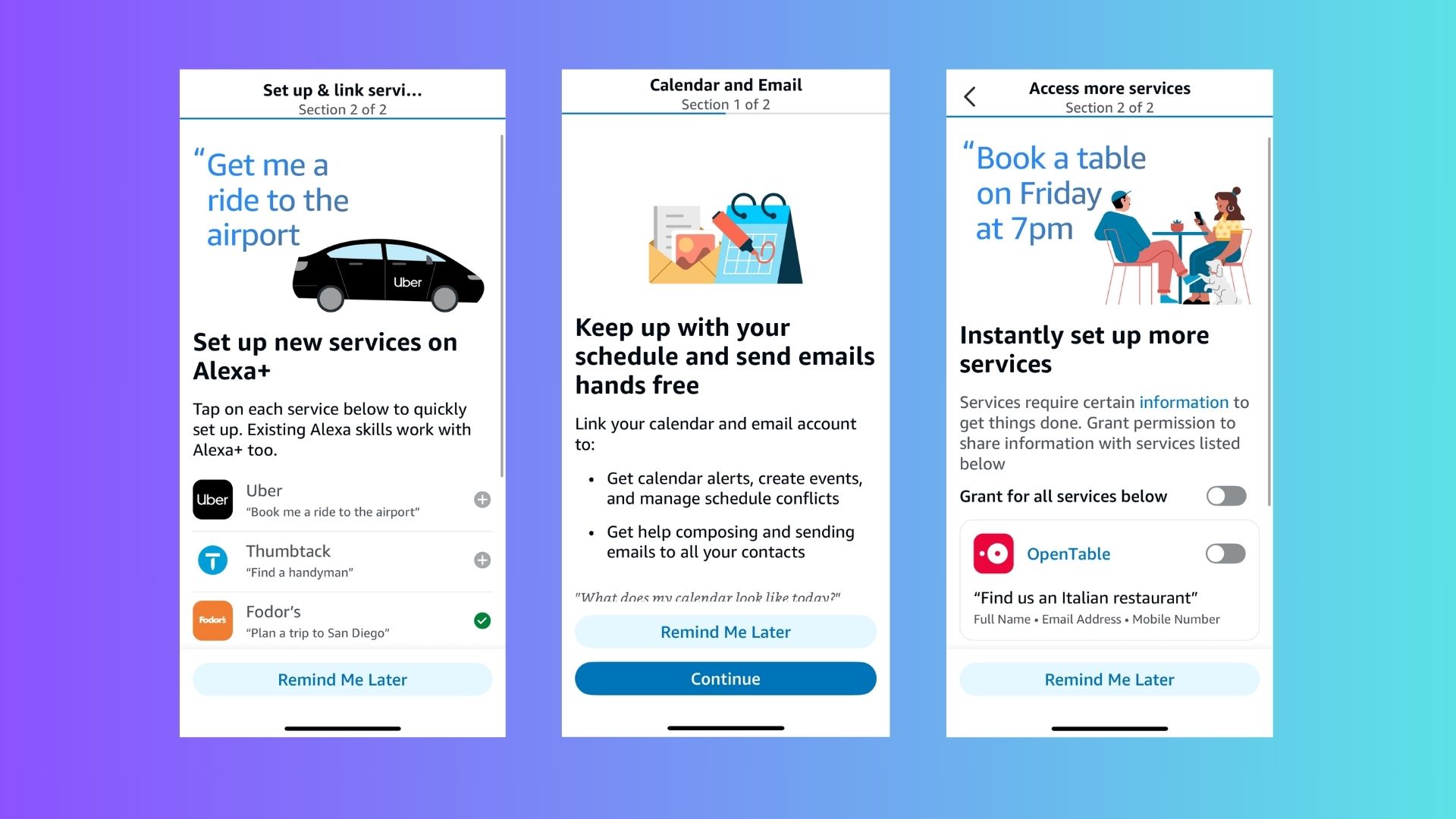I upgraded to Alexa+ for my busy family — here’s what it did surprisingly well

With three kids and constant chaos, I rely on anything that can make life a little easier, more scheduled and quieter (if possible). So when I got the chance to test Alexa+, Amazon’s upgraded AI assistant, I was curious whether it could actually keep up with my family of five.
Spoiler: it can do a lot more than set timers and play “We Don’t Talk About Bruno” for the hundredth time.
Built on Amazon’s new large language model, I discovered just how much Alexa+ turns your Echo speaker into something much smarter.
My experience with Alexa+ proved the assistant to be more like a helpful, proactive assistant than a glorified Bluetooth speaker (something I honestly have felt about Alexa in the past).
After a week of testing it on an Echo Show 21 in our real-life madhouse, I found a lot to love, and a couple of things that could use some fine-tuning.
Alexa+ is still in its "Early Access" testing phase, so it's not been widely released yet, as Amazon is working out the kinks.
Here are five things I love about Alexa+ and two that still bug me.
Get instant access to breaking news, the hottest reviews, great deals and helpful tips.
5 things I love about Alexa+

1. It’s finally conversational
What I noticed right away is how much more conversational and human-like Alexa+ in comparison to the older version. It is also much more natural to talk to because you can interrupt it at any time.
I can also interrupt myself mid-sentence to completely change topics or backtrack. It follows me and get this, it even follows my four-year-old who stumbles over his words and doesn’t always speak in complete sentences. I noticed that Alexa+ adapts to him when it talks.
For example, if I ask for the weather, it just gives me the weather. But if one of my kids asks what the weather is like today, Alexa+ says something like, “Let me put on my weather goggles…” It’s the little details that set this version apart.
It also remembers the context of earlier questions and can handle follow-ups without me needing to rephrase. Yes, even when my kids talk fast, in Gen Alpha slang or from across the room. It’s the first time Alexa has felt like a true back-and-forth assistant.
It remembers facts about the family, our preferences and routines. This has been a game-changer for busy week days, like when I forget to change the thermostat at bedtime to our preferred temperature. It does it for me. I’ve noticed that the more I use it, the personalization has gotten better over time.
2. The screen is more intuitive

One of the most underrated upgrades in Alexa+ is how much more intuitive the screen has become. It now works more like a true smart display; proactively showing relevant visuals based on your context, without needing precise voice commands.
When chatting with Alexa, it actually shows the chat on the screen almost like a text message or chatbot. It's nice for a variety of reasons like, ensuring it understands what I'm saying, understanding what it is saying (especially if the room is noisy) and for reference later.
Ask for a recipe, and you get a step-by-step visual layout with timers you can tap. Even home controls are easier: instead of listing devices, Alexa+ now presents touch-friendly tiles organized by room, making it simple to dim lights or change the thermostat with a swipe. The layout feels cleaner, faster and more responsive.
3. It has made our smart home smarter
With our previous versions of Alexa, controlling smart home devices often meant memorizing exact phrases or setting up rigid routines in the app.
For example, if I said “Turn on the lights in the mud room at 7 p.m.,” it might respond with, “I don’t understand,” if I hadn’t programmed that exact routine. WIth the older version of Alexa, I felt like I was always one step behind it, while this version definitely feels like it knows my routine and my house better than I do.
Alexa+ allows for much more natural, flexible phrasing. Having tested LLMs (large language models), I can only guess that the updated model is better because it can understand context, time references and the way real people actually talk. Sometimes it understands my four-year-old better than I do.
For example, you can now say:
“Turn off the lights in the kids’ rooms after breakfast.”
“Dim the family room when the movie starts.”
“Make sure the porch light is on before we get home.”
The real game-changer for me is that Alexa+ interprets time-based cues like “after dinner” or event-based triggers like “when the movie starts” without needing a strict routine tied to a clock. It can even infer what “the kids’ rooms” refers to based on your device setup and previous conversations.
For a family of five, this is the tool I’ve needed. I really like that I don’t have to micromanage every device or update schedules constantly. Instead, I just speak naturally and trust Alexa+ to fill in the gaps, which makes this multitasking mom very happy.
4. It works across devices

One of the best things about Alexa+ is how seamlessly it works across your entire ecosystem whether you’re at home or on the go. The Alexa app now mirrors many of the assistant’s upgraded capabilities, meaning you can control your smart home remotely with ease. This is a total game changer for me because sometimes I’ll leave the house and wonder if I remembered to turn the outside lights off or close the garage.
I’ve used the app while away from home to turn off forgotten porch lights, adjust the thermostat before heading back and even check if the front door is locked; all with natural, conversational commands.
Thanks to Alexa+ syncing context across devices, the system knows what I’ve asked before, so I don’t have to start from scratch each time. Whether I’m speaking to a smart speaker in the kitchen or tapping through the app at the grocery store, Alexa+ keeps everything in sync, giving me consistent, proactive help no matter where I am.
5. It understands real-world context

What sets Alexa+ apart is how well it connects the dots between my preferences, schedule, shopping habits, and smart home activity. It’s no longer just responding to commands — it’s anticipating needs based on what it knows about my life.
For example, it keeps track of my most frequently purchased items on Amazon, making it easy to restock household essentials with a quick “reorder my buy-again items” prompt. No more scrambling when we run out of paper towels or dog food.
But where Alexa+ really shines is in how it understands time and priorities. The other night, I asked when I should squeeze in a workout — and instead of just giving a random suggestion, it scanned my calendar, noticed my kid’s soccer game, and even reminded me of a catch-up coffee I had forgotten to reschedule. That level of situational awareness is new — and genuinely helpful.
Alexa+ feels more like a personal assistant who knows my routines, commitments, and habits, rather than just a voice waiting for commands. It’s thoughtful, responsive, and increasingly capable of adapting to real-world complexity in a way that feels natural and surprisingly human.
Two areas that still need improvement

While there’s a lot to love about Alexa+, it’s not quite perfect. As with most early AI rollouts, there are still a few kinks to work out.
From inconsistent audio performance to occasional inaccuracies, Alexa+ sometimes feels like it's still finding its voice, literally and figuratively.
Hopefully, as Amazon continues refining the system, these growing pains will smooth out.
1. Sound issues and constantly repeating myself
Alexa+ has a more expressive, natural-sounding voice — which is great... until it isn’t. The responses are warm and personable, but sometimes they don’t always apply to what was asked. Also, she pauses at the slightest interruption even if you put down a book or your phone near it.
There have been moments when I had to repeat myself multiple times before being understood, even in a quiet room. Additionally, sometimes the sound randomly goes off and I have to tell Alexa that I cannot hear it. Personality is great, but efficiency still matters — especially when you're in the middle of making dinner or wrangling kids.
2. It’s not always accurate (yet)
In my testing, Alexa+ occasionally got key facts wrong, including movie ticket prices and a restaurant’s hours of operation.
These might seem like small errors, but they show the limits of Alexa+ when it comes to sourcing real-time information. Because Alexa+ still relies heavily on third-party data, the accuracy of its responses is only as good as the sources it pulls from.
That’s fine for casual queries, but it’s not yet dependable enough to be your go-to for time-sensitive or critical decisions. Until the system gets better at verifying info or flagging uncertainty, it’s best to double-check anything important.
Bottom line
Alexa+ is a big leap forward for smart assistants. After a week of living with it in a house full of noisy kids, forgotten appointments and endless to-do lists, I can confidently say it’s the smartest Alexa has ever felt.
This version anticipates, adapts and genuinely helps. From adjusting the thermostat when I forget, to following my four-year-old’s half-formed voice commands, Alexa+ proves it can thrive in the beautiful chaos of real family life.
It’s not perfect yet. There were moments where I had to repeat myself or double-check answers, and sometimes I wished it would skip the extra friendliness and just get to the point.
But these feel like early-version quirks, not dealbreakers. And given how quickly AI tools are evolving, I wouldn’t be surprised if these issues are ironed out soon.
The bottom line? Alexa+ certainly feels like a true assistant and it seems to get smarter the more we use it. For busy households, this upgrade is a total game changer.
In the weeks and months to come, I'll be testing out Alexa+ further, to see how it develops. Is there anything you'd like to know about it? Leave a note in the comments!
More from Tom's Guide
- No, The Simpsons didn’t predict that — here’s how AI is fueling viral hoaxes (and how to spot them)
- OpenAI's new ChatGPT agent is here — 5 features that change everything
- Google’s new AI called toy stores for me — and actually found a Labubu

Amanda Caswell is an award-winning journalist, bestselling YA author, and one of today’s leading voices in AI and technology. A celebrated contributor to various news outlets, her sharp insights and relatable storytelling have earned her a loyal readership. Amanda’s work has been recognized with prestigious honors, including outstanding contribution to media.
Known for her ability to bring clarity to even the most complex topics, Amanda seamlessly blends innovation and creativity, inspiring readers to embrace the power of AI and emerging technologies. As a certified prompt engineer, she continues to push the boundaries of how humans and AI can work together.
Beyond her journalism career, Amanda is a long-distance runner and mom of three. She lives in New Jersey.
You must confirm your public display name before commenting
Please logout and then login again, you will then be prompted to enter your display name.










